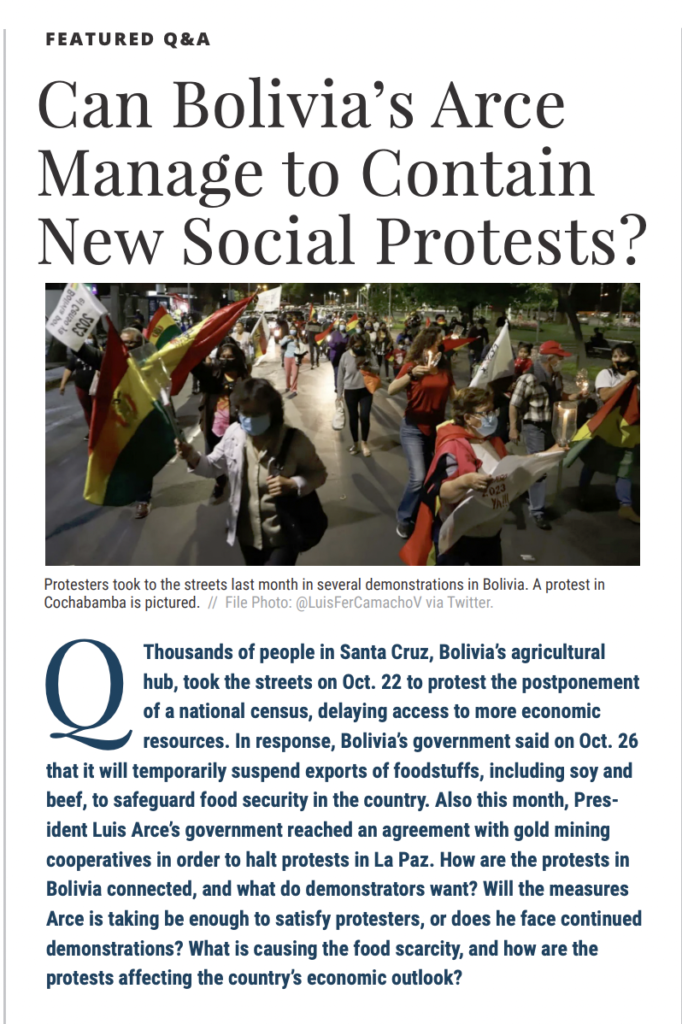Can Bolivia’s Arce Manage to Contain New Social Protests?

Demonstrations are a recurring strategy to obtain State concessions. Regional elites called the current strike with the governor Camacho. By law, censuses occur each decade, but the Arce faces significant delays due to the pandemic, rising hydrocarbons prices and extensive graft during the Añez government.
Santa Cruz elites argue that the region’s population has increased significantly, allowing them greater central government funding, and increased congressional representation congress. Their opponents fear gerrymandering of voting districts and efforts dispute the 2020 elections, as occurred 2019 and in the US.
This top-down strike revives the racism in the 2019 coup. It has cut off daily income for the great majority of Cruceños, who work in the informal sector. Yet, Businesses linked to regional elites continue to operate. The strike began with the fatal beating of a municipal worker, attempting to cross a blockade. The Santa Cruz Youth League (UJC), deemed by the IACHR and the US an illegal para-state group that must be disbanded, has played a central role in the violence.
The Arce administration lifted the great majority of the export prohibitions, and food is plentiful, although the strike and external blockade launched in response have significantly slowed movement in urban Santa Cruz.
Arce has made inroads in dialogue with key sectors. Yet, his failure to disband the UJC or to prosecute Camacho, for admitting that his father paid security forces to mutiny in 2019, permitted the resurgence of this regional conflict. A lack of clear government messaging or inter-ministerial coordination further impede progress.
To read comments from other contributors, click here:
https://www.thedialogue.org/wp-content/uploads/2022/11/LAA221109.pdf
